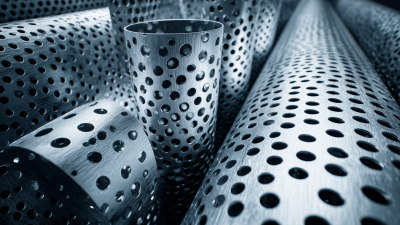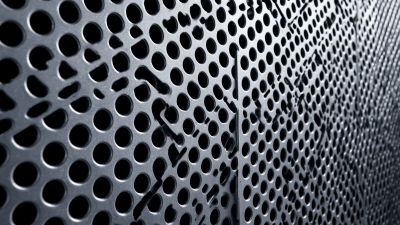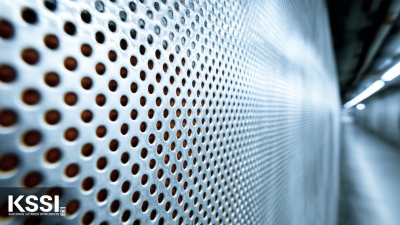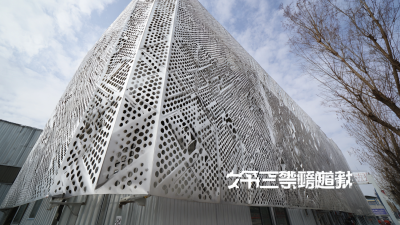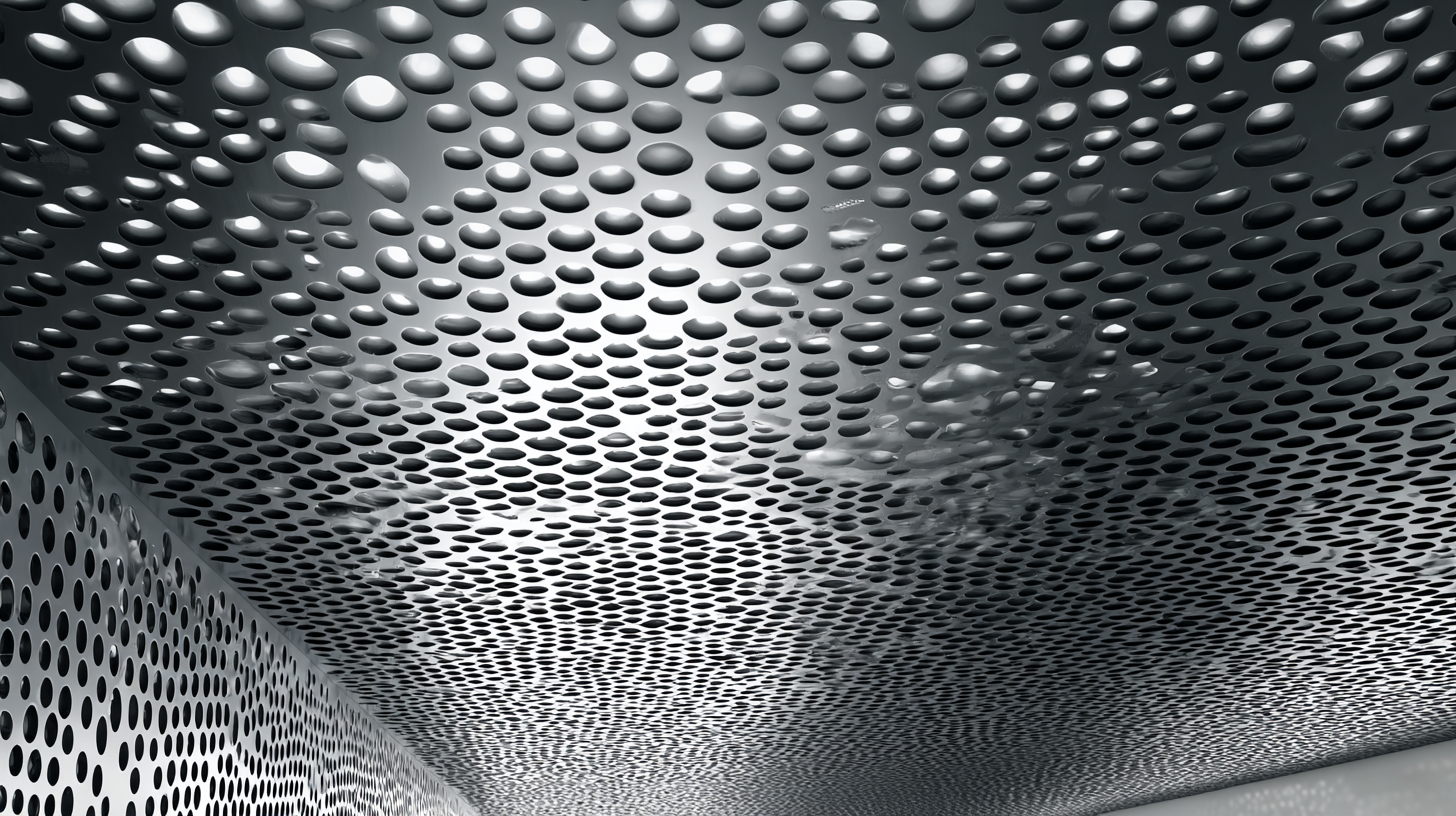 The innovative applications of perforated steel panels have emerged as a transformative element in modern architecture, profoundly influencing both aesthetic design and sustainability practices. As architects and designers increasingly prioritize environmental responsibility, perforated steel panels have proven to be an effective solution, offering numerous benefits such as light control, ventilation, and material efficiency.
The innovative applications of perforated steel panels have emerged as a transformative element in modern architecture, profoundly influencing both aesthetic design and sustainability practices. As architects and designers increasingly prioritize environmental responsibility, perforated steel panels have proven to be an effective solution, offering numerous benefits such as light control, ventilation, and material efficiency.
These panels not only enhance the visual appeal of structures but also contribute to energy conservation by optimizing natural light and reducing the reliance on artificial lighting. Furthermore, the recyclability of steel promotes a sustainable lifecycle, aligning with contemporary green building standards. In exploring the impact of perforated steel panels, this paper delves into their versatility, functionality, and the role they play in shaping sustainable architecture, ultimately highlighting how these innovative materials are redefining our built environment.
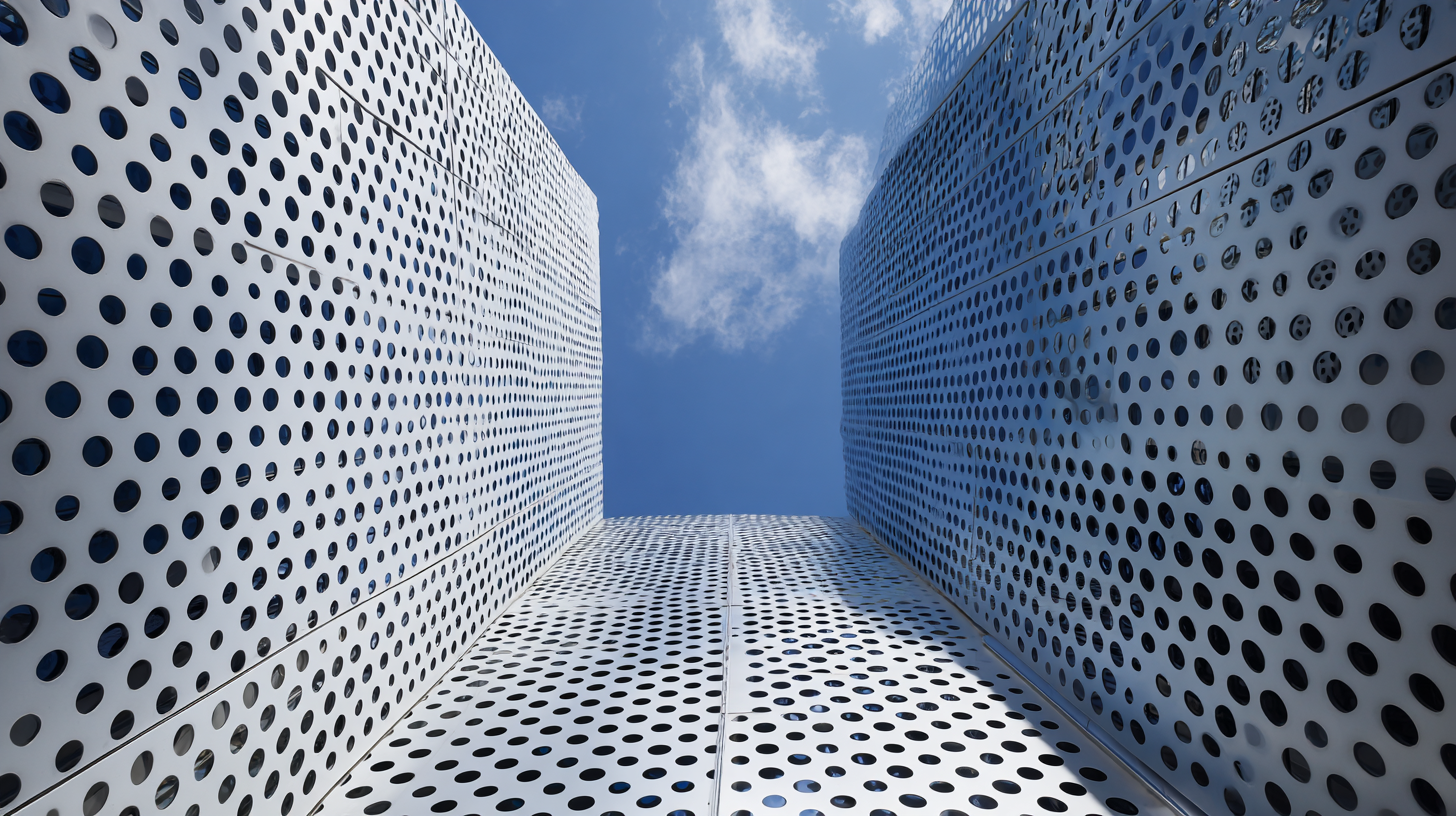 Perforated steel panels have emerged as a significant element in modern architectural design, providing both aesthetic appeal and functional advantages. These panels are characterized by a series of holes or openings that not only contribute to their striking visual effects but also enhance their performance in terms of light filtration and ventilation. According to a report by the Metal Construction Association, the use of perforated metals can improve energy efficiency in buildings by allowing natural light to permeate while reducing the reliance on artificial lighting—potentially decreasing energy costs by up to 20%.
Perforated steel panels have emerged as a significant element in modern architectural design, providing both aesthetic appeal and functional advantages. These panels are characterized by a series of holes or openings that not only contribute to their striking visual effects but also enhance their performance in terms of light filtration and ventilation. According to a report by the Metal Construction Association, the use of perforated metals can improve energy efficiency in buildings by allowing natural light to permeate while reducing the reliance on artificial lighting—potentially decreasing energy costs by up to 20%.
The design potential of perforated steel panels is vast, enabling architects to create intricate patterns and textures that can adapt to various environmental contexts. Moreover, studies indicate that incorporating these panels can significantly contribute to achieving LEED certification by supporting sustainable practices. With a growing emphasis on reducing carbon footprints, the adaptability of perforated panels plays a crucial role; they can be used in facades to mitigate heat gain and promote better air circulation. This design innovation not only enhances the usability of spaces but also aligns with modern sustainability goals.
The integration of perforated steel panels in modern architecture represents a significant leap towards energy-efficient building solutions. These panels, characterized by their unique aesthetic and functional properties, allow for natural ventilation and daylight penetration, reducing dependence on artificial lighting and mechanical cooling. By strategically positioning these perforated elements, architects can create dynamic facades that regulate temperature and airflow, thereby enhancing occupant comfort while minimizing energy consumption.
Additionally, the adaptable nature of perforated steel allows for innovative design possibilities that contribute to sustainability. The reduction of heat island effect in urban areas is a prime benefit, as these panels can reflect solar energy and reduce surrounding temperatures. Furthermore, when combined with renewable energy technologies, such as photovoltaic cells, perforated steel panels can serve dual purposes, generating energy while providing structural support. This multifunctionality aligns with the growing emphasis on sustainable practices in construction, showcasing how perforated steel is not merely a design choice, but a pivotal component in the movement towards environmentally responsible architecture.
| Application Area | Functionality | Sustainability Impact | Energy Efficiency Rating |
|---|---|---|---|
| Facade Design | Aesthetic enhancement and sun shading | Reduces heat gain, lowering cooling costs | LEED Certified - Gold |
| Ventilation Systems | Natural airflow induction | Improves indoor air quality, reducing energy needs | Energy Star Rated |
| Noise Control Panels | Sound absorption and diffusion | Enhances acoustic comfort, leading to less energy used for cooling | BREEAM Excellent |
| Solar Panel Integration | Support structure for solar panels | Generates renewable energy on-site | NET ZERO Energy Rated |
| Rainwater Harvesting Systems | Collection surfaces for rainwater | Reduces stormwater runoff and water consumption | Green Building Certified |
Perforated steel panels have gained popularity in modern architecture not only for their functional benefits but also for their aesthetic appeal. These innovative materials offer architects the ability to create dynamic facades that can play with light and shadows, adding a unique character to buildings. According to a report by the Steel Construction Institute, perforated steel can reduce material usage without compromising structural integrity, enhancing both sustainability and beauty in design. The interplay between solid and void within these panels allows for creative expressions, encouraging architects to push the boundaries of conventional design while maintaining eco-friendly practices.

When incorporating perforated steel panels into a design, consider the following tips: First, think about the orientation of the panels. The angle and placement can dramatically alter how natural light interacts with the surface, impacting the indoor environment positively. Second, explore different patterns—complex designs can help in achieving both visual intrigue and effective ventilation. For instance, a study published in the Journal of Architectural Engineering found that perforated facades can reduce solar gain by up to 30%, which benefits energy efficiency and enhances overall occupant comfort. Embracing these strategies can lead to buildings that not only stand out visually but also support sustainable living.
Perforated steel panels are gaining traction in modern architecture due to their unique aesthetic and structural qualities, as well as their potential for environmental sustainability. These panels allow for natural light penetration while reducing material usage, which directly contributes to energy savings in buildings. By incorporating perforated steel, architects can create visually stunning facades that promote ventilation and reduce reliance on artificial heating and cooling systems, ultimately lowering a building's carbon footprint.
When assessing the environmental impact of sustainable steel applications, it’s essential to consider the entire lifecycle of the material. While steel production can be resource-intensive, advancements in recycling technologies significantly mitigate these effects. By using recycled steel for perforated panels, architects not only diminish waste but also conserve energy compared to using virgin resources.
**Tip:** Opt for local manufacturers of perforated steel to reduce transportation emissions and support regional economies. Additionally, consider the panel design carefully; patterns that enhance airflow can improve thermal performance and contribute to overall building sustainability.
Perforated steel panels have emerged as a transformative element in modern architecture, particularly within the framework of sustainable design. Their ability to balance aesthetics with functionality allows architects to create structures that not only look innovative but also support eco-friendly practices. For instance, the use of perforated panels in a high-rise building can facilitate natural ventilation, reducing reliance on artificial climate control systems. This case study highlights how such designs can minimize energy consumption while enhancing the comfort of inhabitants.
When considering the integration of perforated panels, architects should prioritize materials that align with sustainability goals. Choosing recycled steel can contribute significantly to reducing the overall carbon footprint of a building. Additionally, incorporating variable perforation patterns can optimize light control and heat gain, showcasing the versatility of these panels in varying climates.
Tip: Always conduct a thorough assessment of your local climate and environmental conditions to design effective perforation patterns that maximize energy efficiency. Engaging with sustainability consultants can further enhance the project's eco-friendly impact, ensuring compliance with contemporary green building standards.
